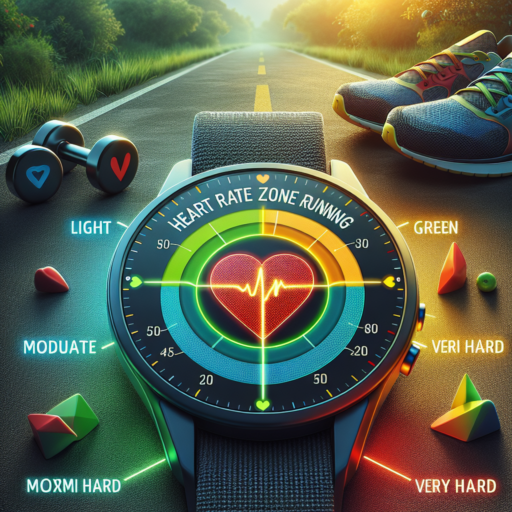What is Elliptical Training and Its Benefits for Runners?
Elliptical training refers to a type of low-impact cardiovascular exercise performed on an elliptical machine, a stationary exercise equipment that simulates running or walking without causing excessive pressure to the joints. This method of exercise is particularly beneficial for runners looking for an effective cross-training option that minimizes the risk of injury while enhancing overall fitness.
One of the key benefits for runners incorporating elliptical training into their routine is the reduction in impact stress on the legs, hips, and back. Since running, especially on hard surfaces, can take a toll on the body’s joints, the elliptical provides an excellent alternative to maintain cardiovascular fitness without the wear and tear. Moreover, it offers a full-body workout, engaging not only the legs but also the arms, chest, and back through the use of moving handlebars, thus enhancing upper body strength which is often neglected in regular running training.
The versatility of elliptical machines also allows for varied and high-intensity workouts that are beneficial for runners looking to improve their endurance and speed. With features such as adjustable resistance and incline, as well as pre-set workout programs, runners can simulate hilly terrain and interval training, crucial elements for enhancing running performance. Additionally, elliptical training can aid in improving running form and economy by encouraging a smoother stride and better coordination.
The Differences Between Elliptical Training and Running
Understanding the differences between elliptical training and running can help fitness enthusiasts make informed decisions about their exercise regimens. Both forms of exercise offer cardiovascular benefits, but they engage the body in significantly different ways. One primary distinction is the impact level on the body’s joints.
Elliptical training is renowned for being a low-impact activity. It mimics the natural movement of running but without the harsh contact with the ground, making it an ideal choice for individuals with joint issues or those recovering from injuries. The elliptical trainer’s design allows for a fluid motion that reduces stress on the knees, hips, and back.
In contrast, running is a high-impact exercise that involves a repetitive striking force on the joints with each step. This can lead to a higher risk of injury over time, particularly if proper form is not maintained or if one runs on hard surfaces frequently. However, running is effective in building bone density and strength due to the weight-bearing nature of the activity.
Another key difference lies in the ability to vary resistance and use different muscle groups. Elliptical machines often feature adjustable resistance levels and incline options, enabling users to target a wider range of muscle groups, including the arms, legs, and core, during a single workout. Running, while primarily focusing on the lower body, requires the engagement of core muscles for stability but offers less variability in resistance, unless incorporating hills or speed intervals into the routine.
How Elliptical Training Can Improve Your Running Performance
Elliptical training has emerged as a preferred cross-training method for runners looking to enhance their performance. The unique mechanics of an elliptical machine allow for a low-impact workout, which significantly reduces the strain on the joints compared to running on hard surfaces. This makes it an ideal alternative for recovery days or for athletes looking to prevent overuse injuries.
One of the key benefits of elliptical training is its ability to mimic the running motion without the corresponding impact. This not only helps in maintaining cardiovascular endurance but also in strengthening the muscles used in running. By targeting similar muscle groups in a different way, runners can improve their strength and endurance, ultimately leading to better running performance.
Moreover, elliptical machines often come with adjustable resistance and incline settings, enabling users to create a customized workout that can closely simulate running conditions. This versatility allows for targeted strength and endurance building exercises, which are crucial for runners aiming to enhance their speed, stamina, and overall performance. Incorporating elliptical training into a well-rounded fitness routine can thus serve as a valuable tool for runners seeking to achieve their peak performance.
Elliptical Training Workouts Specifically Designed for Runners
Running enthusiasts often seek effective cross-training methods to enhance their performance and reduce injury risk. Elliptical training workouts, specifically designed for runners, strike the perfect balance, providing a low-impact yet highly effective cardiovascular challenge. These workouts not only aid in building stamina but also focus on strengthening muscles commonly used in running.
Integrating elliptical sessions into your training schedule can yield significant benefits. Firstly, it mimics the natural running motion, thereby engaging the same muscle groups without the harsh impact on joints. This is particularly advantageous for injury prevention and recovery periods. Additionally, elliptical workouts can be strategically designed to target endurance, speed, and strength–key components for any runner aiming to improve their game.
To begin, incorporating interval training on the elliptical can dramatically boost a runner’s aerobic capacity. Varied intensity workouts, where you alternate between high-intensity bursts and recovery periods, closely simulate the dynamics of a rigorous running session. This approach ensures your body adapts to managing and recovering from physical stress, a skill crucial for long-distance events and races.
Maximizing Your Cardio: Combining Elliptical Training with Running
Integrating elliptical training with traditional running routines can open the door to enhanced cardiovascular benefits and a reduction in the risk of injury. By balancing the low-impact nature of an elliptical machine with the high-intensity and endurance-building aspects of running, individuals can create a comprehensive cardio workout regime. This fusion not only boosts overall health but also adds variety to keep motivation levels high.
The key to maximizing your cardio through this combination lies in understanding the unique advantages each method brings to the table. Elliptical training, with its fluid motion, targets a wide range of muscle groups while mitigating strain on the joints. This makes it an ideal companion to running, which emphasizes cardiovascular endurance and can sometimes lead to higher impact-related concerns. Together, they ensure a full-body workout while safeguarding against the common pitfalls associated with high-impact exercises.
Strategizing the integration of elliptical workouts and running sessions can leverage the strengths of both activities. Beginning with elliptical exercises as a warm-up can prepare the muscles and joints for the rigors of running, improving performance and reducing the risk of injury. Alternatively, using the elliptical machine for cool-down sessions or on non-running days can maintain cardiovascular conditioning without overburdening the body. This balanced approach helps in achieving sustained improvements in fitness levels and endurance capacities.
No se han encontrado productos.
Injury Prevention: How Elliptical Training Can Keep Runners Safe
Incorporating elliptical training into a runner’s regimen is more than just a way to stave off boredom; it’s a strategic move for injury prevention. Unlike the relentless pounding of pavement, an elliptical machine provides a low-impact alternative that can greatly reduce the stress on a runner’s joints. This aspect of elliptical training is crucial for long-term joint health and can help runners avoid common injuries such as runner’s knee, shin splints, and stress fractures.
Cardiovascular Maintenance
While maintaining cardiovascular fitness is a top priority for runners, the elliptical can simulate running motions without the high impact, ensuring athletes can keep their heart rates up while giving their joints a much-needed break. This balance between maintaining endurance and reducing wear and tear is key to keeping runners safe and injury-free. Moreover, the adjustable resistance levels of an elliptical machine allow for targeted strength training, which is vital for bolstering muscles that stabilize the knees, hips, and ankles.
Flexibility and Cross-Training
Another significant advantage to elliptical training is the encouragement of muscle flexibility and balance. By utilizing an elliptical machine, runners can engage different muscle groups than those used primarily in running. This form of cross-training not only prevents overuse injuries but also enhances overall athletic performance. The backward movement option on an elliptical also offers a unique way to engage and strengthen the posterior chain muscles, which are crucial for runners but often neglected.
The Role of Elliptical Training in Runners’ Recovery Processes
Elliptical training has emerged as a key component in the recovery processes of runners, leveraging its low-impact nature to foster quicker rehabilitation from injuries. Unlike traditional running, which can exacerbate stress on joints, ligaments, and muscles, elliptical machines offer a more gentle approach, aiding in the preservation of endurance and fitness levels during recovery periods.
The dynamic motion facilitated by elliptical machines closely mimics the natural running gait, but without the harsh impact associated with pavement or track running. This unique quality not only helps in maintaining cardiovascular conditioning but also in reinforcing the muscle groups used in running. As a result, runners can efficiently transition back to their regular training routines, experiencing fewer setbacks in performance.
Benefits of Incorporating Elliptical Training into Recovery
- Minimizes the risk of further injury by reducing impact forces on the body
- Helps maintain and improve aerobic fitness without the stress of weight-bearing exercises
- Supports balanced muscle engagement, reducing the likelihood of developing muscle imbalances
Integrating Elliptical Training into Your Running Routine: Practical Tips
Incorporating elliptical training into your running routine offers a host of benefits, from reduced impact on joints to improved cardiovascular health. If you’re a runner looking to enhance endurance or recover from injury without sacrificing fitness, elliptical machines might be your perfect ally. Here’s how to seamlessly weave elliptical training into your regimen for maximum gains.
Opt for a Balanced Approach
To effectively integrate elliptical training, start by replacing one or two of your weekly runs with elliptical sessions. This balanced approach helps maintain running-specific fitness while reaping the elliptical’s low-impact benefits. Ensure to mimic your running effort on the elliptical, keeping your heart rate within the same zone as your typical runs. This strategy not only aids in maintaining cardiovascular fitness but also in muscle engagement similar to running.
Focus on Elliptical Technique for Maximum Benefit
While ellipticals are known for being kinder to the joints, proper form is crucial to deriving maximum benefit without risk of injury. Aim for a full range of motion, ensuring your feet stay flat on the pedals, thus emulating the natural running stride. Additionally, engaging the arm levers not only provides a full-body workout but also simulates the arm action of running, enhancing coordination and balance.
Remember, integrating elliptical training into your running routine shouldn’t detract from your love of running. Instead, view it as a complementary activity that boosts your running performance and overall fitness. By alternating between the road and the elliptical, you give your body the variety it needs to stay engaged, recover adequately, and reach its peak potential.
Comparing Results: Runners Who Use Elliptical Training vs. Those Who Don’t
In the realm of fitness and long-distance running, the incorporation of elliptical training into a runner’s routine is a topic of much debate. Athletes and fitness enthusiasts often ponder whether the use of elliptical machines offers tangible benefits over traditional running practices. This comparative exploration aims to shed light on the differences in performance, injury prevention, and overall fitness levels between runners who incorporate elliptical training and those who strictly stick to pavement pounding.
One of the primary aspects to consider is performance enhancement. Runners who blend elliptical training with their regular routines often report improved stamina and endurance. This can be attributed to the lower impact on joints provided by ellipticals, allowing for longer and potentially more productive workouts without the added stress on the body. The versatility of an elliptical machine enables runners to simulate running up hills, adding a valuable dimension to their training regimen that is not as readily available to those who only run outdoors.
Another significant factor is injury prevention and recovery. Runners who utilize elliptical machines as a part of their training strategy may experience fewer injuries. The elliptical’s design reduces the impact on knees, hips, and backs, which are commonly affected among hardcore runners. This reduced risk of injury is especially beneficial for runners in their off-season or during recovery periods, as it allows for maintaining fitness levels without hindering the healing process.
FAQs: Common Questions About Elliptical Training for Runners
Elliptical training is a topic that frequently comes under scrutiny in the running community. Runners often have numerous questions about how incorporating this form of cross-training can impact their performance, injury recovery, and overall fitness levels. This section aims to address some of those common inquiries, offering insights into the synergies and distinctions between elliptical workouts and traditional running.
How Does Elliptical Training Benefit Runners?
First and foremost, runners look towards elliptical training for its low-impact nature. Unlike the repetitive pounding of feet on pavement or a track, elliptical machines provide a smooth motion that significantly reduces strain on the joints. This aspect is particularly beneficial for injury recovery phases or when runners are seeking to reduce the risk of overuse injuries. Moreover, the adjustable resistance and incline settings can mimic the intensity of running up hills, offering a varied and challenging workout that can enhance cardiovascular endurance and muscular strength.
Can Elliptical Training Replace Running?
While the elliptical can serve as a significant supplement to a runner’s training regimen, it’s crucial to understand that it cannot fully replace the biomechanical dynamics of running. Running involves specific muscle activations and ground force reactions that are not precisely replicated on an elliptical machine. However, for runners dealing with injuries or during adverse weather conditions when outdoor sessions are not possible, the elliptical provides a valuable alternative to maintain fitness without exacerbating injuries or compromising training progress.
Should Runners Adjust Their Elliptical Workouts?
Yes, to maximize the benefits of elliptical training, adjustments are necessary. Tailoring the workout intensity, duration, and resistance levels to align closely with current training goals and recovery states ensures that runners can leverage the elliptical for effective cross-training. Incorporating intervals, varying the incline, and adjusting the resistance to simulate different running conditions can further enhance the training impact, making elliptical workouts a versatile tool in a runner’s fitness arsenal.




